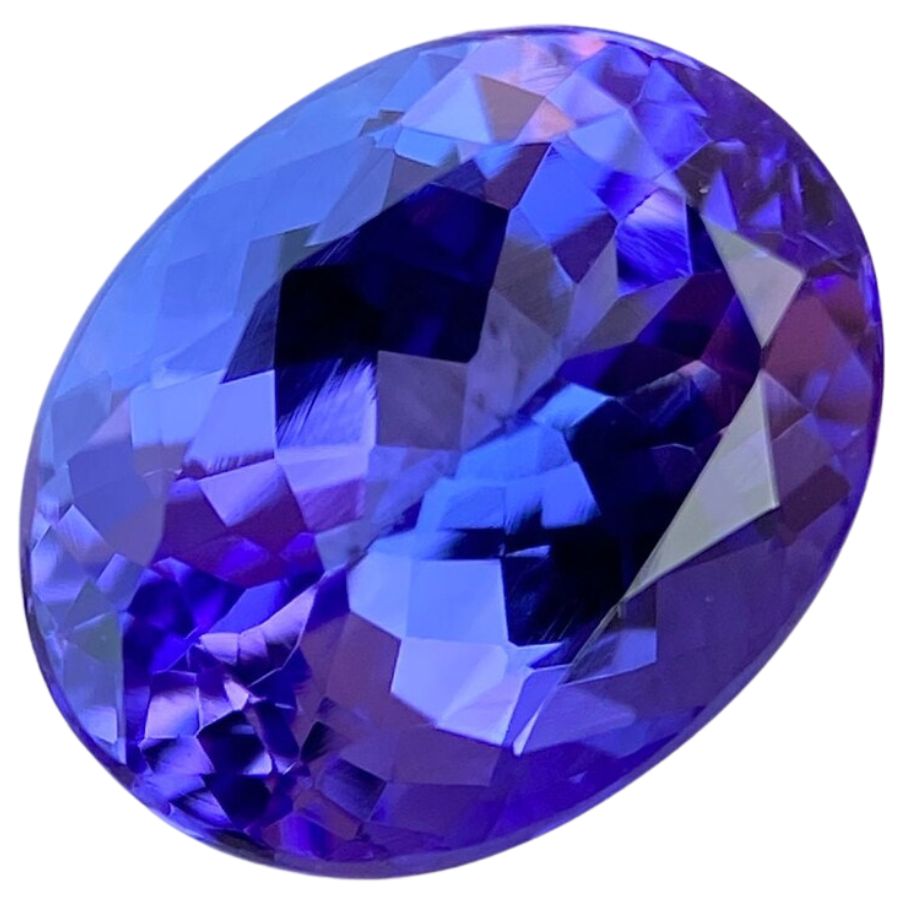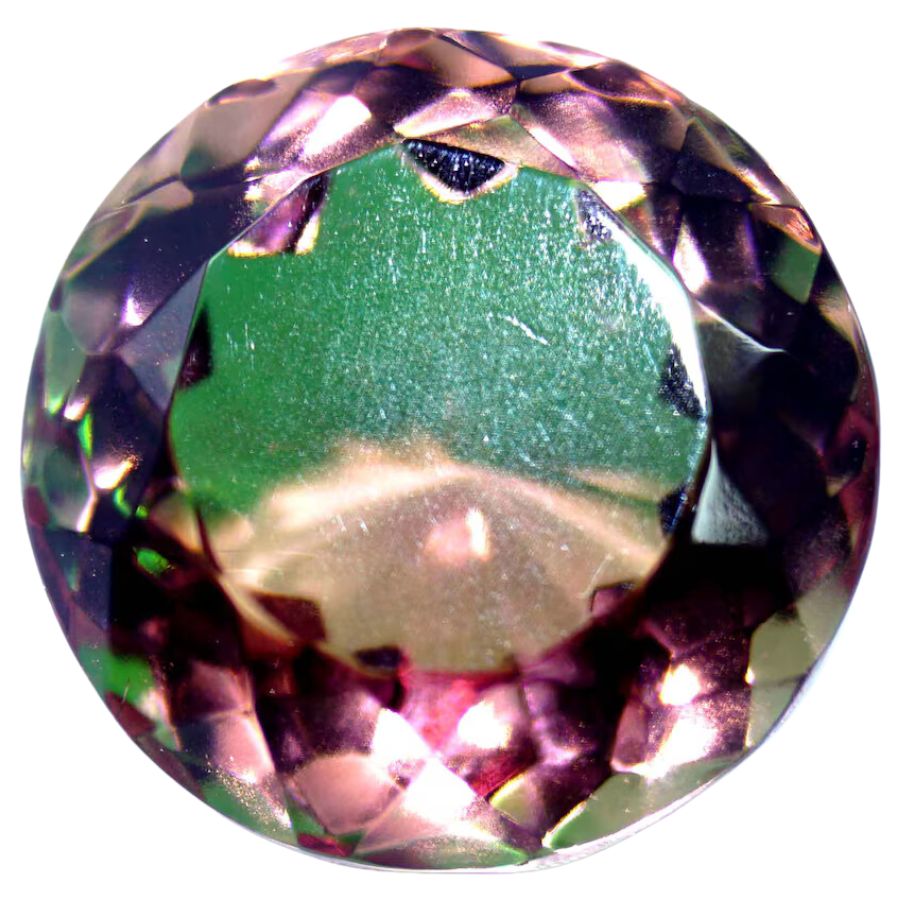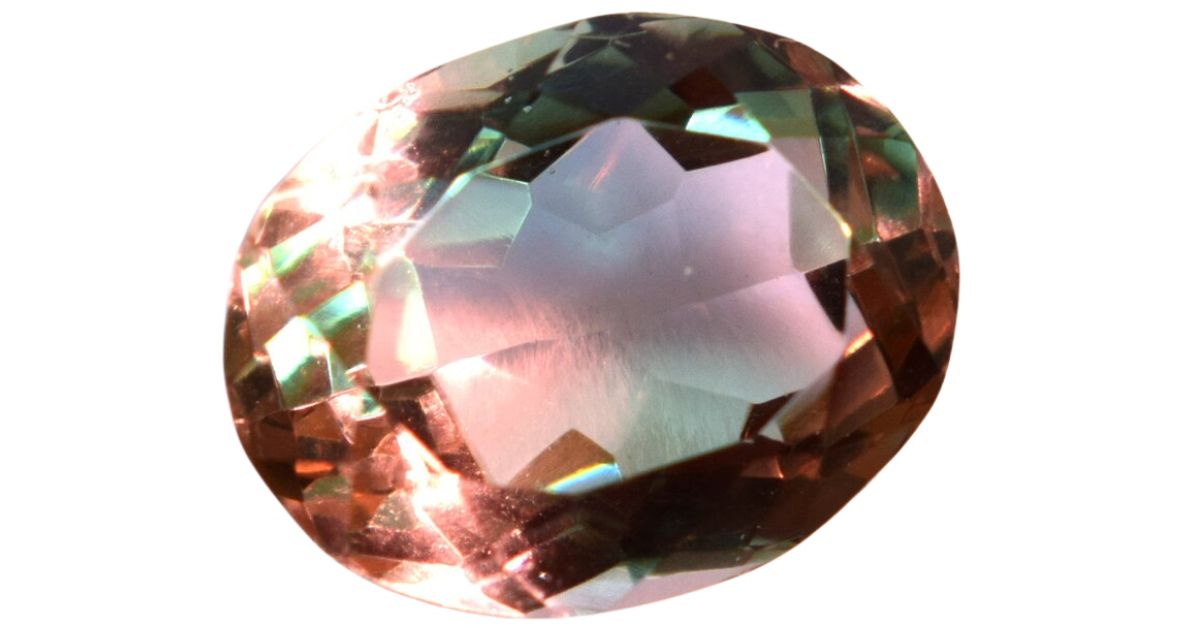Some crystals and gemstones can change colors under different lights or when you look at them from different angles. This cool ability is because of how their crystals are formed and how they interact with light.
People find these color-changing gems really interesting because they never look exactly the same. Each time you see them, they might surprise you with a new color based on where you are and the lighting around you.
Color-Changing Gems and How They Work
Some crystals and gemstones can show more than one color, which is pretty awesome. We’ll talk about what they’re made of, the different colors they can turn, and how rare or common they can be.
Color-Change Fluorite

Fluorite is basically made of something called calcium fluoride (CaF2). However, when small amounts of elements like europium and ytterbium get into the fluorite when it’s forming, it can result in color-change fluorite.
Color-change fluorite can switch between several colors. It can go from blue under natural light to green or purple if you look at it under a light bulb.
While fluorite is a common mineral, color-change fluorite is quite rare. Even though fluorite can glow under UV light, the ones that actually change colors are more of a rare find.
Color-Change Spinel

Spinel is mainly made of magnesium aluminum oxide. But spinel has a cool trick: it can swap magnesium for other elements like iron or zinc, which is why spinel gems can be all sorts of colors.
The reason some spinel stones can change colors involves a mix of tiny impurities, how the stone soaks up light, and the crystal structure itself. For example, chromium and iron in the spinel can absorb certain light wavelengths.
Color-change spinel can go from looking blue or green in natural light to being red or purple under artificial light.
Most of the time, spinel sticks to one color. But the ones that can change colors are pretty rare and super cool to see.
Tanzanite

Tanzanite is made of a complex mix, including calcium, aluminium, silicon, and oxygen, but what really gives tanzanite its stunning colors is a little bit of vanadium mixed in.
The reason tanzanite seems to change colors is because of something called pleochroism. This means that the gem can show different colors, like blue, violet, and sometimes red, depending on the angle you look at it.
So, when you move the stone around, it looks like it’s changing colors because of how the light hits it.
You’ll notice that a piece of tanzanite might look more blue from one angle and more violet from another. And if you’re really lucky, you might even see hints of red peeking through.
Every piece of tanzanite has pleochroism. It’s just how tanzanite is made and doesn’t need any special tricks to see it. This means if you’ve got a tanzanite, you’ve got a stone that naturally loves to show off its colors.
Zultanite

Zultanite is the name used for a specific type of the mineral diaspore. It’s mostly made of aluminum, oxygen, and a bit of hydrogen.
Elements like chromium and iron get mixed into zultanite when it’s forming. These bits affect how light bounces off and goes through the stone, making it look different colors in different lights.
Zultanite can switch from shades of green in natural light to pink or reddish-brown in artificial light. Sometimes, you might see it change from a light green to a pretty orange-pink.
Every piece of zultanite has a color-changing ability, but zultanite itself is very rare.
Alexandrite

Alexandrite is a type of chrysoberyl, made mainly of beryllium, aluminum, and oxygen. However, elements like chromium and sometimes titanium are what make alexandrite change colors.
Under natural light, alexandrite can look like a bright green or blue-green. But when you bring it inside or under different light, it changes to a reddish-purple color.
Finding an alexandrite that changes colors really well is pretty rare. Most of them do change color, but finding one that goes from a really bright green to a deep red is not very common.
Color-Change Garnet

Color-change garnets are a cool part of the garnet family, which is a bunch of similar minerals that have different ingredients. These garnets can change colors because they’re made from a mix of different types of garnets, like pyrope and spessartite.
It’s not just one type of mineral but a combination of different minerals that makes this happen. The presence of elements like chromium or vanadium is what creates color-change garnets.
These garnets can go from a blue-green color in sunlight to a purplish-red under indoor light. They can also go from a dull gray-blue outside to a bright pink-purple when you bring them inside.
Finding a garnet that can change colors like this is pretty rare. It needs just the right mix of garnet types and the perfect amount of specific elements.
Color-Change Sapphire

Sapphire is a type of gemstone that comes from a mineral called corundum. Basically, it’s made of aluminum oxide, which is a mix of aluminum and oxygen.
What’s cool about some sapphires is they can change colors because of their pleochroism. They can absorb light differently based on the angle at which you’re holding them.
These color-change sapphires can also switch from one color to another based on the light source. In sunlight, they look blue, but under a lamp or candlelight, they can look violet or even reddish-purple.
However, color-change sapphires are uncommon. The ones that change colors really well are even rarer.
Tourmaline

Tourmaline is actually a group of minerals with a complicated formula that can include elements like magnesium, iron, and lithium. Because of these different elements, tourmaline comes in a bunch of different colors.
One reason tourmaline can change colors is because of pleochroism. You might see a tourmaline look blue from one side and green from another, all because of how its crystals absorb light.
Tourmaline crystals can also have something called the Usambara effect, which isn’t as common. This happens when light travels a long way through the stone, and it can make the color look different depending on how thick the tourmaline is.
Finding a tourmaline that changes colors a lot isn’t super common, but it’s not super rare either. However, the ones with a really big and noticeable color change are more uncommon.
Andesine

Andesine is part of a big family of minerals called plagioclase feldspars, which are made of silicon and oxygen atoms that have come together in a special shape. Andesine in particular has both sodium and calcium mixed in.
Like many other gemstones, andesine exhibits pleochroism. So if you look at a piece of andesine from one angle, its color can change if you look at it from another angle.
Under natural daylight or fluorescent light, the andesine might appear predominantly green. When viewed from a different angle or under incandescent light, the stone can shift towards reddish hues or even take on a purplish appearance.
Finding andesine that changes colors in a really dramatic way isn’t super common, but it’s not super rare either. But the ones that go from a really bright green to a deep red or purple are more special and harder to find.
Iolite

Iolite is the gemstone version of the mineral called cordierite. It’s made up of magnesium, iron, and aluminum, all mixed up with silicon and oxygen.
The reason iolite can look different colors from different angles is because of its pleochroism. When you look at iolite one way, it can be a deep blue, like the ocean.
But then, if you turn it or look under a different light, it might change to look more yellow or even brown. The significance of this color change can depend on how much iron is in the iolite.
Pleochroism is actually pretty common in iolite. But, not all iolites change color in a big, dramatic way. The ones that do – shifting from a really nice blue to a distinct yellow or brown – are less common.


